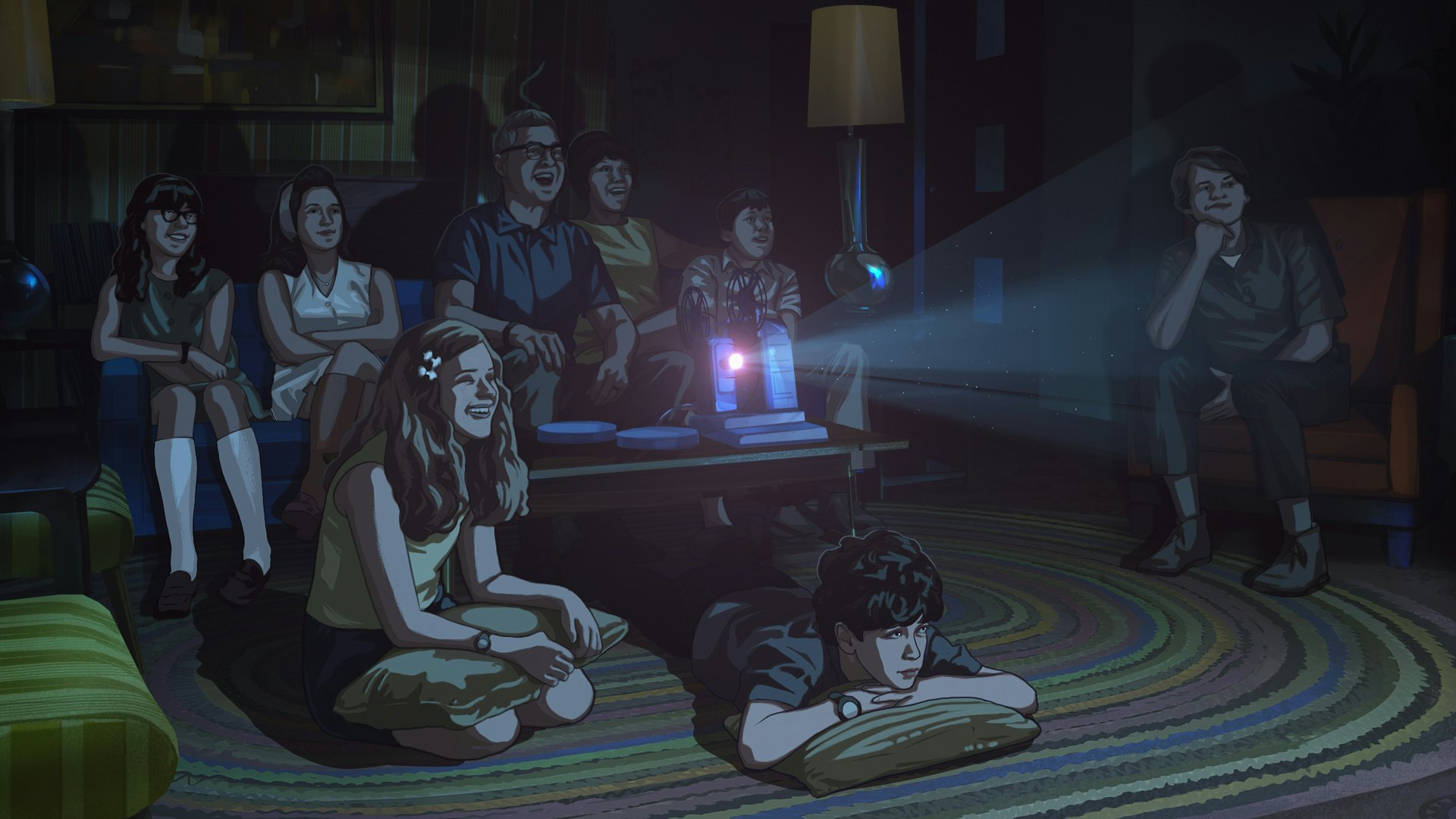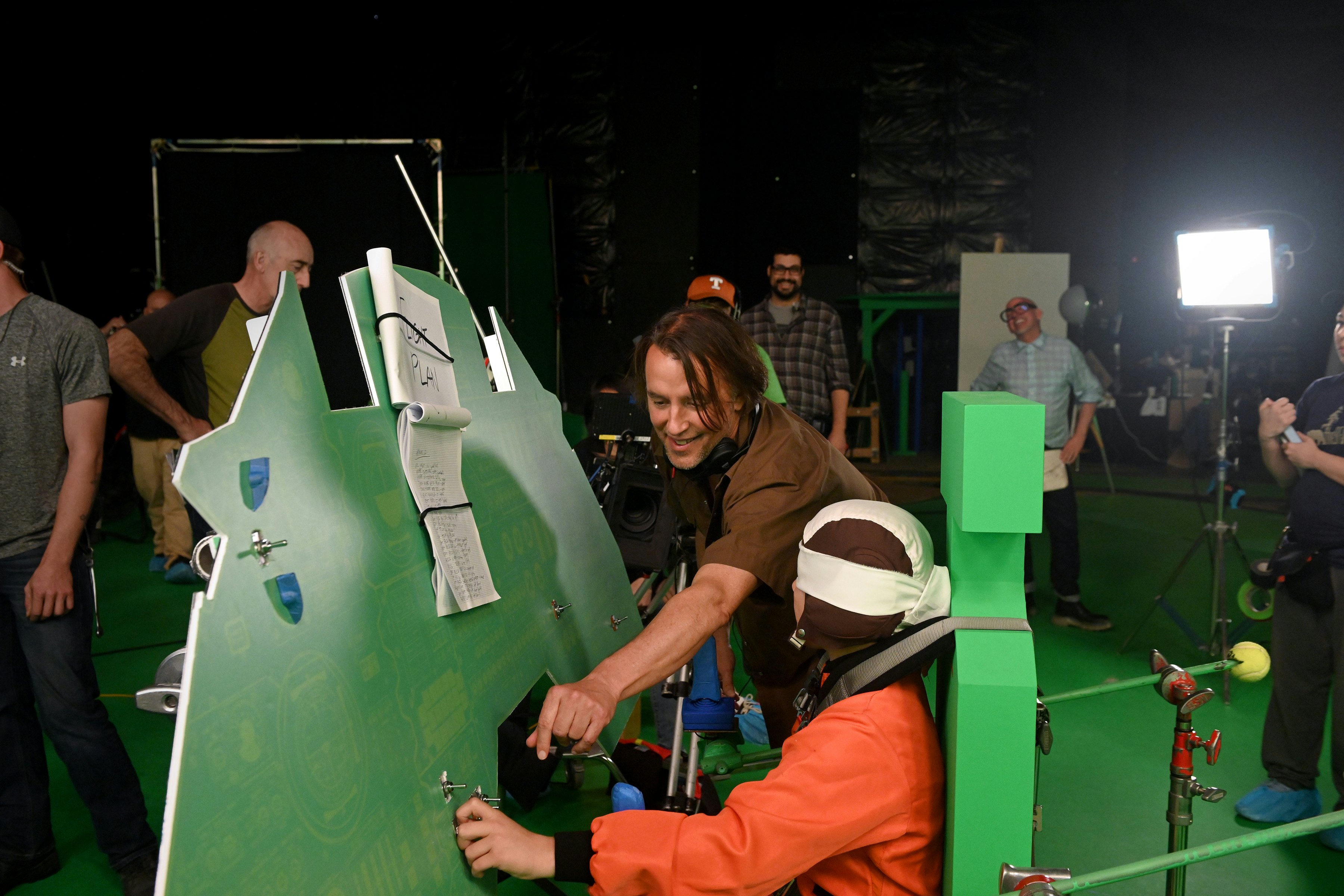
Every kid on the planet once dreamed of being an astronaut.
At least, that’s how Richard Linklater remembers it.
“As people always wanted to fly, the idea of leaving the Earth's atmosphere and flying to the moon or other planets, there’s something primordial about it,” the filmmaker tells Inverse. “It’s just so natural.”
Born in Texas in 1960, Linklater grew up in the shadow of Houston’s NASA headquarters. Most of the adults he knew were involved with the space program, and its centrality to life was reflected in everything from the nearby Astrodome to the model rockets kids would fire off at recess.
Apollo 10 1/2: A Space Age Childhood — Linklater’s latest feature (and his first project for a streaming service; it’s currently on Netflix) — is the filmmaker’s attempt to recapture the sense of wonder he felt as the space race heated up in his little corner of Texas.
“Living near NASA made it even more real,” he says by phone. “Everybody knew astronauts. Everybody worked at NASA. It was the company town, at least that section of Houston. I wanted to tell a story of what it felt like to be near all that, from a kid’s perspective.”
Unlike Linklater’s previously acclaimed time capsules, from hazy hangout classic Dazed and Confused to the decades-spanning Before trilogy and 12-years-in-the-making Boyhood, Apollo 10 1/2 is both animated and autobiographical. This allowed the director to explore his own memories, as well as the science-fiction daydreams of his youth.
“The real world is very expansive until you know how it works,” says Linklater. “But it’s fun to dream. I think every kid has the right to have some rich, fantasy, open-possibility life.”

Set during the summer of 1969, Apollo 10 1/2 weaves together a Jack Black-narrated stroll down memory lane with the fantastical story of ten-and-a-half-year-old Stan (Milo Coy), a fourth-grader recruited for a top-secret NASA mission.
Though any adults in earshot might be skeptical of the explanation two NASA scientists (Glen Powell and Zachary Levi) give Stan for pulling him out of school — they built the lunar module “a little too small” — it’s enough for the moon-eyed preteen, who’d otherwise be spending summer counting down to Apollo 11’s launch.
“It was a youthful undertaking.”
For Powell, an Austin native who co-starred in the ‘80s-set Everybody Wants Some!! for Linklater, stepping into the role of a NASA official gave him a mission-control view of the moon landing. Given that Powell portrayed astronaut John Glenn in the Oscar-nominated drama Hidden Figures, he found this new perspective exciting.
“That was actually part of Rick’s pitch,” recalls Powell. “He said, ‘Hey, man, you’ve already played an astronaut. What if you do mission control? That’d be fun, right?’ I’m like, ‘You can tell me to play anything, man. I could be the guy mowing the lawn at NASA, and I’d do it if you asked me to.’”
Following Apollo 10 1/2’s world premiere at Austin’s South by Southwest Film Festival, Linklater and Powell told Inverse about stepping back through time, recreating 1960s Texas, and capturing memories of fantasy.
This interview was edited and condensed for clarity.

Inverse: Richard, I often feel like time is the lead character of your films, with its passage driving the plot and the way we see its flow. How did you want to approach time in Apollo 10 1/2?
Richard Linklater: It’s closer to what I’ve done in a few other movies, where you take a time and a place and you dig in. My goal was to share what it felt like to be human at a certain place in time: What it sounded like, what it looked like, what some of the attitudes were, how people were processing the culture. It was carving out a niche of time in 1969 to process and feel within.
I had the indulgence of getting both the naïve kid’s perspective and that of the adults who could find ironies and cultural critique. Jack Black’s narration is funny because he’s commenting on, “We didn’t have the chemical thing worked out yet” as we’re getting dosed with DDT and nerve gas. History can be pretty fraught when you get into it. It’s like, “Oh, gosh, people did that.” The film’s lathered in that, but it’s not angry about it. It’s more bluntly realistic, I guess.
Glen, this is your second collaboration with Richard, after Everybody Wants Some!!. Tell me about Richard Linklater.
Glen Powell: I adore Rick. He’s been a guy I’ve looked up to my entire life. Being in Austin, he’s a Texas icon and deserves to be on the Mount Rushmore of filmmakers. He has given so much to that medium, over such a large period of time, with such different kinds of movies. You can see with Apollo 10 1/2 that he’s just so unique. It’s something that can only come from his brain. He has his process, the way he approaches it, the way he deals with actors — it’s a dream, from start to finish.
I would be so lucky and thrilled if all I could do is make Richard Linklater movies for the rest of my life. He’s a kind person. Sometimes, the dynamics of a director-actor relationship can vary on different movies. And with Rick, there’s no ego to the guy at all. He’s a true collaborator, a guy who loves being on a film set as much as anybody. The happiest you’ll ever see me is on a film set, and Rick is the same way.
Nostalgia factors heavily into Apollo 10 1/2. How do you feel about nostalgia as a cultural force, given the frequency with which it’s commercialized?
RL: I hate it as a cultural commodity, so much, when you feel it’s being sold in some cynical way. But as a human, it’s a true way of seeing and processing the world, and not only your own history. We’re always processing our entire lives at all times. It just gets more poignant the older you get.
For most people, the critique of parenting in your own childhood doesn’t kick in until you have kids. That’s what happened to me. I was getting dragged through my old life via my kids, thinking, “Wait, that was crazy. I would never do that to my kids. Times have changed.” You don’t have to think about it too much until it's closer to home.
“I don’t want to be sold nostalgia.”
I liked the idea of regaining this time and dealing with it, but I think we’re capable of doing that to any moment in history. When I say I’m nostalgic, that doesn't mean I wish I lived there. We need a few more words in our vocabulary to cover the range of what we’re talking about here. Nostalgia seems simple and treacly.
There’s a sad part to nostalgia; there’s a double-edged sword, a certain amount of loss. There should be better words for it because it doesn’t mean just one thing. I don’t want to be sold nostalgia, but I don’t mind living through other times. When you read history, you appreciate the facts. Give me the facts on the ground, give me the details, and I will put it together and tell you what I think about it.
The animation techniques in Apollo 10 1/2 enhance the film’s balance between memory’s meandering flow and the clarity of historical details. What did animation add for you?
RL: What we’re going for in animation is a very realistic form. It’s dreamlike. Other animation styles create a whole ‘nother world, whereas I wanted to create this world. Animation struggles with real humans, but I wanted your brain to accept it as some kind of reality. I want you to get lost in that. On that experiential level, I thought that would be great if it felt like a dream.
It was wild to take existing imagery — from 2001: A Space Odyssey or other films, TV, or culture — and pull them towards our animated world. When you dream of a movie, you’re not seeing the exact movie. You’re seeing your brain’s interpretation of that movie. It’s pretty close, like you might remember something. But this whole thing is its own universe, its own memory-fantasy.
With animated Walter Cronkite being on the TV, it’s like, “That’s him, but it’s not. It’s my memory of him.” It feels like a memory — more than when you watch actual news, where it’s like, “Okay, that was the newscast, and I got thrown a fact.” When it’s animated, you’re like, “Oh, that feels like slightly fuzzier.” It’s him. It’s his voice, but it feels closer to the imaginative realm where memory works.

Glen, what was it like to act in this medium? I’m especially curious about the scene where you tell a young Stan that you built the lunar module too small.
GP: With every role, you have to come from a place of truth. “Okay, what does this actually look like in practice?” If I were running an Apollo program, and I did build the space capsule too small, and I had to recruit a kid off a playground to go to the Moon, how would I feel about that? I’d feel pretty frustrated with myself! And I’d feel frustrated about questions about why I screwed it up!
“Age is actually a virtue.”
John Hughes captured this idea that the kids know better. The kids are the smart ones in the room. Obviously, I’m not the kid. I get to be the idiot adult. But there’s such joy, for young kids watching movies, to see themselves as smart, to know that age is not something to look down on. Age is actually a virtue.
The animation almost abstracted your appearance. I found myself projecting memories of people I know onto your character, as much as I knew I was watching Glen Powell.
GP: The fact that it’s animated may add to the feeling of having those shared moments and finding nostalgia even more in this piece. It’s almost like you’re not watching actors. It’s not an exact recreation. It’s impressionistic. Rick talked about the seamlessness with which you can blend fact and fantasy, how animation can blur those two lines.
When you shoot something live-action like Everybody Wants Some!!, it doesn’t change performance, necessarily, but it does change the way the audience perceives it. With Everybody Wants Some!!, the very small target that we were trying to hit was to make anybody who’d ever played sports, in any decade, watch it and say, “Wow, that was my experience, too.” Apollo 10 1/2 has the same magic. We’re not here; we’re decades away from that moment. And yet it still feels so personal and present.

Richard, you have firsthand knowledge of 1969 Houston, but this film is extraordinarily detailed. At what point did memory flow into research?
RL: That’s been such a fascinating journey, revisiting something in a much more historically data-driven way, such as reading actual transcripts of transmissions from the lunar module, the flight, and training. NASA is very open with its materials. I read an obituary of a guy in The New York Times. He was the one who saved Apollo 11 when the 1202 alarm went off. They’re like, “Hey, what's this?” And he was like, “No, that’s okay. Continue to landing.” It was the split-second decisions people were making, based on their hardcore training.
There’s a good chance Apollo 11 would’ve gotten close, then aborted 500 feet from the surface, if they hadn’t known that this one alarm wasn’t a problem. There was one way to do it right, and thousands of ways to do it wrong. And they did it right. It’s unbelievable. I’m even more impressed now with the accomplishment that it was. I have enjoyed seeing it from an adult perspective, layered in with my own ironies of the time, that The Archies, this comic-book group, had the number-one song of the year. Funny shit like that.
Glen, you previously played an astronaut in Hidden Figures, set in 1961. How did playing a character in mission control add to your understanding of the space race?
GP: What’s really special about this movie is that it’s also about a kid appreciating that his dad is part of this program. How many minds does it take to send a person into orbit, to the Moon? Living in Texas, growing up around people whose parents were involved in NASA, it doesn’t feel far-fetched to me that great minds got to be a part of this. Making movies is a team sport. Some people are more glorified than others, but it’s always a team effort. This movie captures that.
With John Glenn, I’m not the lead of Hidden Figures. One of the great parts about that movie is that it’s about the minds that send this man into orbit. That’s rare: Movies are usually about what we’d call a hero, the person who’s in the cockpit. That’s the normal story we tell. What’s fun about Hidden Figures and Apollo 10 1/2 is that it’s about people on the ground, who are responsible for the majesty in the heavens.

There is such a youthful quality to the NASA scientists, too, which resonates with Stan. Richard, did you want to capture a certain boyishness through those characters?
RL: It was a youthful undertaking. It didn’t feel that way when I was 7 or 8. It felt like all these old people. But you look back at the history, and they were all in their 30s. Mission control, the average age was pretty young. Some were in their 30s and 40s, but there were guys in their 20s.
Depends on what you consider young, but it wasn’t a thing done by old folks. It was infused with enthusiasm, and there was a youth to it. Look who kicked the whole thing off: Our most youthful, vigorous President John F. Kennedy. It was a new America. It was a new day. Youth was really treasured then, too. The young people were going to take over.
Apollo 10 1/2: A Space Age Childhood is now streaming on Netflix.







